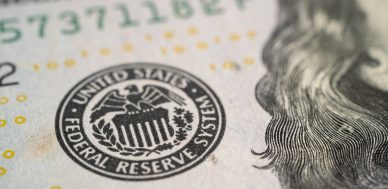Odds of Negative Interest Rates Keep Increasing
Negative interest rates could become a reality in the U.S. within five years.
Given what’s been happening with monetary policy right now, negative interest rates might sound like an out-of-this-world idea. It’s certainly something no one is talking about these days. The debate is all about how high interest rates could go. However, the odds of negative interest rates in the U.S. are increasing. In fact, the faster the Federal Reserve raises its benchmark interest rate now, the sooner we get interest rates below zero in the U.S.
You just have to look at how the Federal Reserve has behaved in the past (assuming its thinking remains the same today) to see why negative interest rates could be here within five years.
Since 1955, the Federal Reserve has raised its benchmark interest rate many times, and those rate hikes have been fast. U.S. interest rates eventually peak, and as they peak, the economy starts to stall. This, in turn, causes the Fed to panic and reduce its benchmark rate below its previous low. Moreover, the Fed’s rate cuts tend to happen a lot faster than its rate hikes.
Look at the following chart for some perspective.
Chart courtesy of StockCharts.com
See something interesting?
Between late 2004 and early 2006, the effective federal funds rate spiked and peaked. Then the economy started to fall apart, leading to a financial crisis. In 2004, the effective federal funds rate stood around one percent. It surged past five percent by 2006, but rate cuts followed. By the end of 2009, interest rates set by the Fed were almost down to zero.
Go back a little further and see the pattern: the Fed’s benchmark interest rate started to increase between 1995 and 2000. By mid-2001, the rate was below its previous low. Between 1986 and 1989, interest rates spiked. By early 1991, they were below their 1986 low.
The only exception to the pattern since at least 1955 was the period between 1977 and the mid-1980s. During that time, the U.S. economy was going through a period of high inflation. The Federal Reserve took a very tough stance back then, raising interest rates very quickly to crush inflation. A decade later, though, interest rates were much lower than their previous lows.
In 2015, the Federal Reserve raised its benchmark interest rate. In 2019, the Fed was forced to cut it as the economy started to slow down. By 2020, interest rates were back to around zero. They didn’t go below zero because the financial crisis and economic slowdown weren’t as severe as originally expected.
What Now?
The Federal Reserve has been raising its benchmark interest rate at an extremely fast pace. The Fed has also made it very clear that interest rates will continue to go higher.
Eventually, higher interest rates will start to hurt the U.S. economy (economic data suggests there has already been a lot of economic damage) and the Fed will be forced to stop raising its rates. When the Federal Reserve stops raising its benchmark rate, it essentially means something has been broken. If you look at the issue from a financial-market perspective, the economic damage comes around the time that the Fed pivots, and investors’ nerves only calm once there are interest rate cuts.
Dear reader, the faster the Fed raises interest rates, the bigger the problems get for the U.S. economy. This will eventually force the Fed to pivot and cut its benchmark rate so it’s lower than it was during the previous interest rate cycle.
As the Federal Reserve raises interest rates, don’t overlook the amount of debt there is in the U.S. economy. Essentially, over the past 15 years, interest rates have stood close to zero, and this has caused a sort of addiction to debt. There has been a significant rise in debt during these years, and higher interest rates will hurt those who overleveraged themselves.
Before we get negative interest rates in the U.S., there could be immense volatility in the financial markets and a lot of economic misery. So, it might not be a bad idea for investors to pay attention to real assets like gold. Negative interest rates would make the yellow precious metal an extremely attractive investment.
